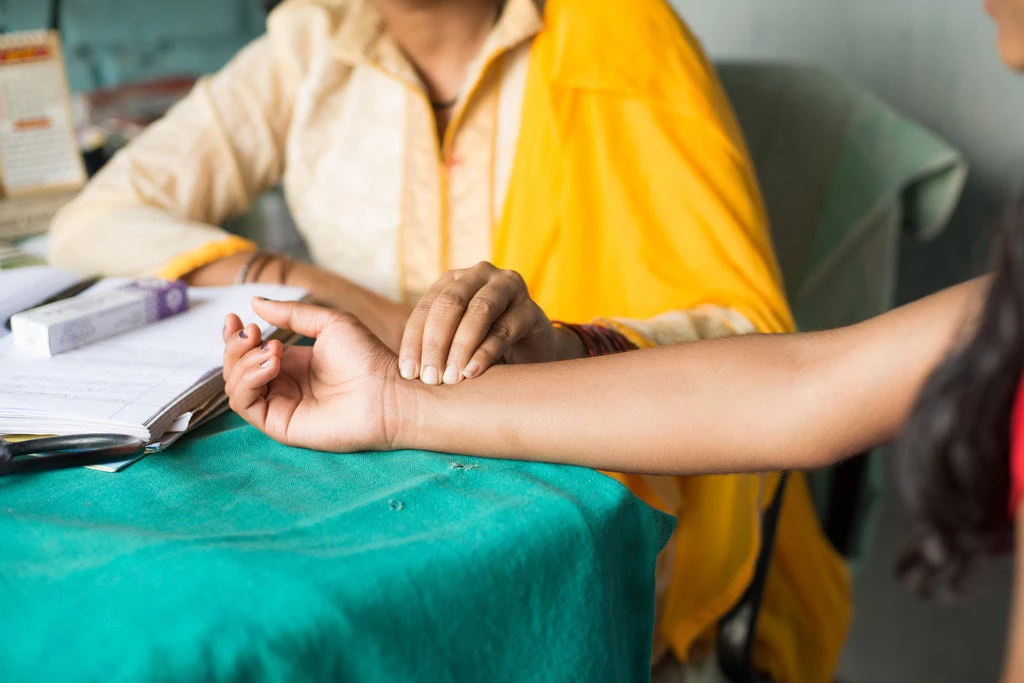Imagine you fall ill or have a serious accident. You survive, but to recover you need extensive medical care. The problem? You don’t have insurance and have to pay out of pocket. Your life savings are quickly drained away, as are your dreams. Your children lose hope for higher education; your well-researched business plan becomes a work of fiction.
This is a universal fear in every country without a comprehensive health care system. Until recently, India was no exception. But in recent years, the government has made universal access to health care a priority and has taken concrete steps to improve the system. Somali Nagpal, a Senior Health Specialist with the Health, Nutrition and Population Global Practice at the World Bank Group, says that in India, most healthcare services are procured through private spending (currently accounting for 70% of total healthcare expenditure) and that out-of-pocket payments account for 62% of individual’s total healthcare spending, down from 66% over the last 10 years. This has been a major contributor to poverty in India. Every year, over 60 million people in India are driven into poverty because of catastrophic healthcare expenses. This keeps a lot of people from seeking healthcare in the first place, which disproportionately impacts the poor.
Social health insurance is a valuable tool to protect families from falling into poverty or staying in poverty due to high health-related costs. The northern Indian state of Meghalaya, home to nearly three million people, had tried implementing a public health insurance scheme, but too many families failed to enroll or fell through the cracks. According to government data, 40% of people in Meghalaya State are classified as poor and many more are just above poverty line. Under the old insurance scheme, families living just above the poverty line did not qualify for social health insurance, leaving them particularly susceptible to catastrophic health expenses. Furthermore, the existing insurance scheme excludes important services like primary care, diagnostics, and more costly hospital care.
To help provide more people with affordable healthcare, the state government partnered with the private sector through a Public-Private Partnership (PPP) to accelerate the process of developing universal health insurance. In 2012, the International Finance Corporation (IFC) and the Government of Meghalaya launched a three-year program through a competitive bidding process to find a private partner to take on a share of the operational and financial challenges involved in providing universal health care. New India Assurance won the bid. By the end of 2015, nearly half the families in the state were participating. The program entered a second phase in mid-2015 and continues to grow.
[Related: Get the basics of PPPs in India from the World Bank Knowledge Lab]
The program was one of the first successful universal health insurance programs in India, and insights from the project could be valuable for other states that hope to expand health coverage to their citizens. For example:
- A thorough cost analysis provided key information used to determine rates for services, which was critical for getting the private healthcare sector on board.
- Incentives and revenue-sharing mechanisms drastically increased participation of government health facilities — from one to 93 in a single year.
- IFC designed a data-driven methodology to create a list of over three million beneficiaries in the state, pooling data from multiple disparate sources.
[Related: Learn more about PPPs in the healthcare sector]
Families in Meghalaya are better off today because of this project, and have much less to fear from unexpected health-related catastrophes. For just $7 per family per month, the program covers $3,300 per family for primary, diagnostic, and hospitalization care, and includes secondary, tertiary, hospitalization benefits, and rehabilitative and diagnostic services. The new scheme also offers free outpatient services including consultation and medicines for children, pregnant women, and people suffering from chronic non-communicable diseases, and provides expanded access to high impact preventive and primary care services.
The insurance program has transformed critical and desperate unmet healthcare needs of the population into large-scale accessibility backed by paying capacity. The scheme has fostered high levels of competition within the provider market and provided a platform for a substantial expansion in the number and quality of hospitals across India available to the residents of Meghalaya. Learn more about this project and healthcare in India from these publications:
- India: Meghalaya Universal Health Insurance Program
- Government-sponsored health insurance in India: are you covered?
Please leave your comments and questions below; we will be happy to answer them.



Join the Conversation